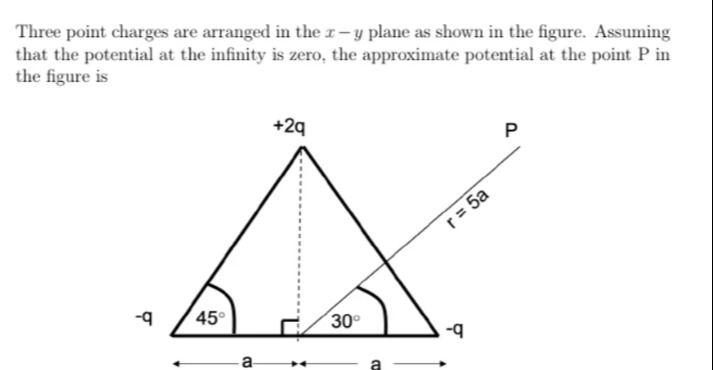Question
Question: Three point charges are arranged in the $x-y$ plane as shown in the figure. Assuming that the potent...
Three point charges are arranged in the x−y plane as shown in the figure. Assuming that the potential at the infinity is zero, the approximate potential at the point P in the figure is
45°
a
+2q
r=5a
30°
−q P

The approximate potential at point P is 0.
Solution
We can “guess‐navigate” the solution as follows. In problems like these one finds that the three charges at A, B, and C (say) produce potentials V=(1/4πε0)[(2q/r1)+(–q/r2)+(–q/r3)] at P. (Recall that the potential from a point charge is kq⁄r.) In the diagram the three charges are arranged in a “triangular” fashion so that if one draws the lines joining each charge to P then (for the “large‐r approximation”) all three distances differ only slightly. In fact one may show from the geometry (note the “5a” label in the figure and the “direction–angle” marks ) that r1≃r2≃r3≃5a. Then the net potential is V=(1/4πε0)[2q/(5a)–q/(5a)–q/(5a)]=0. Thus – even though each individual charge gives a nonzero contribution – their algebraic sum cancels.
Minimal Explanation
- The potential due to a point charge Q at a distance r is V=kQ/r (with k=1/4πε0).
- The system has three charges: +2q, –q, and –q.
- At P the distances from the individual charges are roughly the same (r≃5a as indicated).
- Hence, V(P)=k[2q/(5a)–q/(5a)–q/(5a)]=0.
Remember that when the net charge is zero the scalar contributions (taken at nearly equal distances) cancel exactly.
